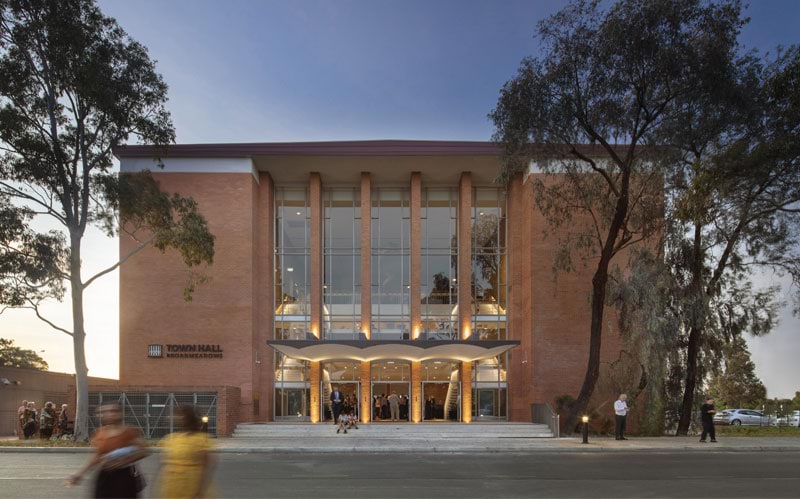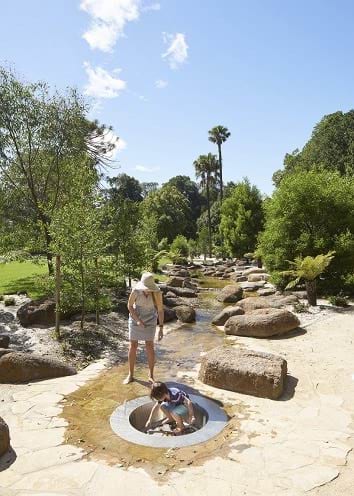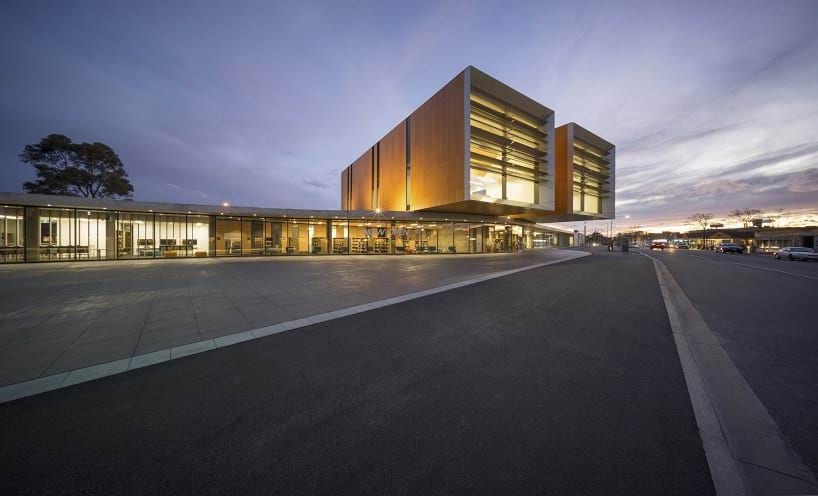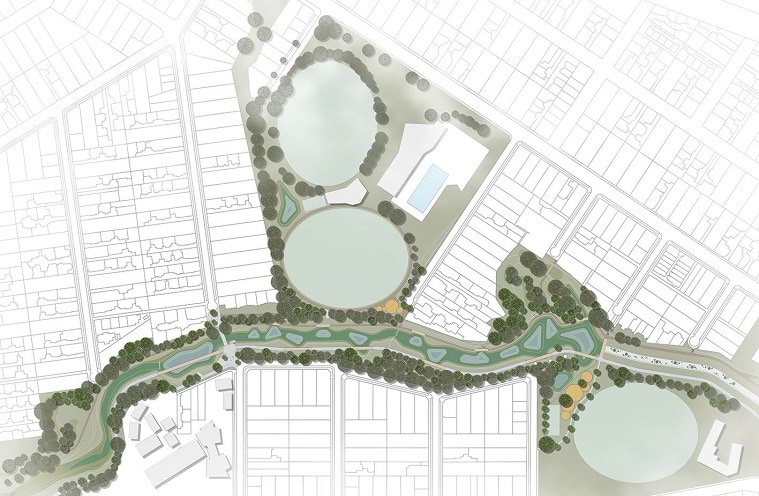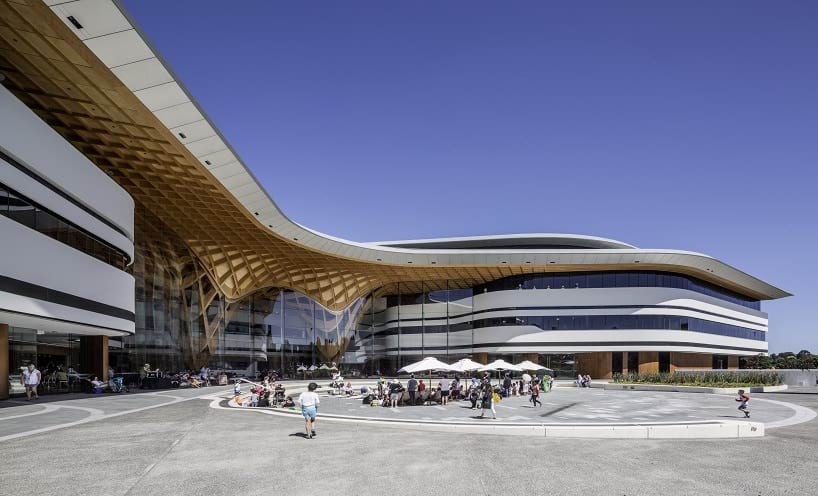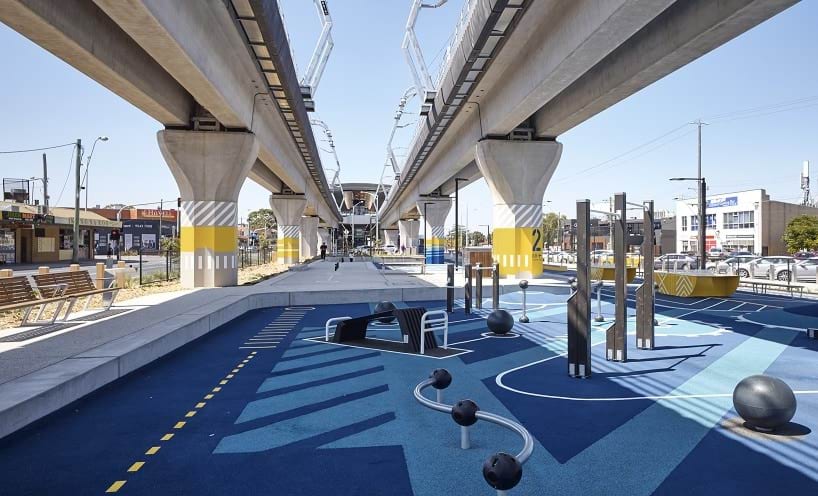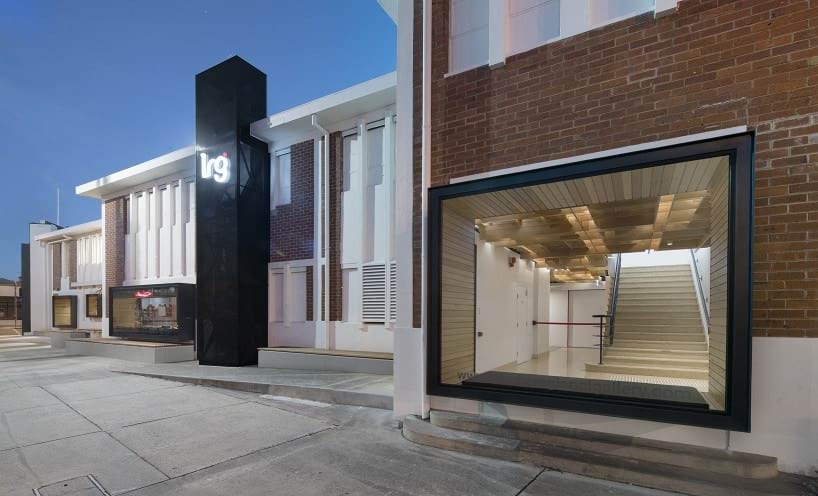You can download a PDF version of Good Design + The Local Government here or read the full text below.
The Office of the Victorian Government Architect provides leadership and strategic advice to the government about architecture and urban design.
This publication is part of the ‘Good Design’ series which raises the awareness of good design, its benefits, its value and how to achieve it. This edition looks at the role that local government can play in supporting good design and the opportunity it has to deliver high‑quality built environments for the communities it serves.
The various processes and initiatives which support good design discussed in this brochure can be adapted to suit a variety of specific local government contexts.
Good design is the essential ingredient at the heart of a successful place – it is not an optional extra.
Local government and good design
Our cities and towns provide us with much more than places to live, work and visit. They provide us with a sense of place with distinct identities and characters. Successful places depend on good design to get these qualities right.
Much of the built environment we experience is the result of local government involvement: from the design of local streets, community and cultural centres and open spaces, to decisions about new development and the protection of heritage.
Local government has the opportunity to be at the forefront of best‑practice planning, urban design and procurement across Victoria.
In the design of our towns and cities there is an enormous opportunity to create public value. The quality of our towns and cities directly influences our decisions to live or establish businesses in a particular area.
Local government in Victoria operates in a rapidly changing context. Populations are growing, demographics are shifting and the challenges of climate change must be met with an increased commitment to sustainability.
Local government has the responsibility to create masterplans and urban design frameworks for growth areas. Establishing high‑quality urban design for these changing areas ensures all development will contribute to creating a great place.
A sound understanding of the value of good design across all levels of local government is fundamental in delivering sustainable, vibrant, equitable, valuable and enduring built environments.
Broadmeadows Town Hall 2019, Client: Hume City Council, Architect: Kerstin Thompson Architects.
Council reversed its initial proposal to demolish the town hall after consultation with the community. The renovation and additions celebrate the history of the building and protect it as a repository of the local community's memories.
Fitzroy Gardens Redevelopment 2015, Client: City of Melbourne, Design: City of Melbourne Design Studio
This project demonstrates the success of in‑house design‑led teams in reshaping urban spaces in response to the city's growing population, visitor numbers and the ongoing impact of climate change.
Local government's role
Local government plays a key role in the delivery of high‑quality places and buildings. It has the opportunity to champion, initiate and deliver good design. Its role is broad and can be highly influential.
As a smart client
Local government can lead by example through its own public projects and guide developments which occur through private investment. By being a well‑informed client, local government can significantly influence the procurement of good design.
High‑quality outcomes depend on the skills of the client, the quality of consultants and the frameworks in which they operate.
Leading
Local government is responsible for creating long‑term strategic visions for their community. Clearly articulating the vision for a municipality in the planning scheme ensures private development contributes to delivering local government's visions. Projects supporting these visions can also be initiated by local government to create local high‑quality benchmarks for enjoyable, equitable and well‑connected places.
Planning for good design
Local government can influence the quality of all new development through the planning system. Planning processes can better support good design outcomes when they are closely aligned with strategic visions. Strategic decisions need to be informed by design expertise in urban design, architecture and landscape architecture. Requirements for specific and measurable deliverables at milestones ensure design quality is supported throughout the approvals process.
Sharing local knowledge
Local governments have an intimate knowledge of the communities they serve and their specific needs. By sharing this knowledge local government can provide an invaluable resource for designers and contribute directly to the shaping of the built environment.
Understanding and communicating value
Local government can communicate that good design presents real value for money and that it should never be considered as an ‘optional extra’. Good design is often incorrectly assumed to cost more, but it has been proven that the whole‑of‑life costs of well designed buildings and places are lower than those which are poorly designed. Their enduring value is also substantially higher.
Changing 'business as usual'
Visionary leadership by local government is required to deliver high‑quality and enduring assets for communities. Changes to an organisation's structure or operation can be challenging but essential to move from delivering only adequate ‘business as usual’ outcomes to those which are transformative, inspiring and enduring.
Balancing Interests
Local government can set a clear vision and direction to balance differing and often competing project interests. A commitment to quality and legacy is often required to bring balance to time and cost as key drivers.
Collaboration across municipal boundaries
Responding to Victoria's unprecedented growth requires a coordinated approach. A high degree of collaboration between local governments is required to deliver projects which often cross municipal boundaries. A shared understanding and commitment to good design principles supports successful outcomes for both the project and the community.
The Frank Bartlett Library and Moe Service Centre 2016, Client: Latrobe City Council, Architect: FJMT
As part of the Moe Activity Centre Plan this local government led project delivered an impressive new civic heart which has become a focal point for the community.
Good Design - What to do
Key Points
There is substantial evidence which demonstrates that the quality of our built environment, and its relationship to our natural environment, directly affects the quality of our lives.
Local government can play a central role in creating great places with enduring value for people through initiatives and processes that promote good design.
Key to achieving good design outcomes are:
- Culture - creating and supporting an organisational culture and structure that is committed to good design, is well resourced and gives authority to design experts.
- Process - committing to processes which define how good design will be valued and achieved, and the skills required to support its delivery.
- Advocacy - acknowledging the value of good design by communicating its many benefits to the community and celebrating high‑quality outcomes.
Good design is relevant and important everywhere. No matter the size of the town or city, good design has equal potential to positively impact the quality of life for the people.
Chain of Ponds 2018, Client: Moreland and Moonee Valley City Councils, Landscape Architects: Realm Studios
This plan, which was jointly developed and endorsed by both councils, reimagines the Moonee Ponds Creek as a healthy, vibrant destination which supports native plants and animals, provides green space for leisure and recreation, and helps prevent flooding.
Casey Community and Cultural Centre – Bunjil Place 2018, Client: City of Casey, Architect: FJMT
The City of Casey led a comprehensive good design procurement process including a paid competition phase and review by an expert judging panel to deliver a significant public building and place for the community.
Culture
Good design doesn't just happen. It needs to be understood, championed and invested in. A design focused culture increases local government's capacity to deliver high‑quality outcomes with enduring value for the community. A culture which is committed to good design is also resourced to deliver it.
Valuing design
A commitment to design across all levels of local government balances capital and whole‑of‑life costs with the broader economic, social and environmental benefits of high‑quality designs. ‘Business as usual’ should be challenged by design‑led thinking to support a more comprehensive understanding of the value of a project.
A design‑led culture sets an expectation for projects to exceed, rather than meet minimum planning standards which tend to lead to lower quality compliance driven outcomes.
Design expertise
Employing appropriately qualified and experienced staff with a comprehensive understanding of the value of good design enables local government to be a smart client.
Design experts should be appointed to positions with authority to reinforce local government's commitment to good design. For example, the appointment of a ‘City Architect’ demonstrates that local government values good design across its operations.
In‑house design experts are able to lead procurement by critically evaluating designs and managing relationships with specialist consultants and developers.
Design expertise can also assist in the interpretation of the planning scheme to support local government's specific requirements and ambitions.
Design Champions
Design champions are individuals who understand and promote the value of design within an organisation. It is not essential that design champions are expert design professionals themselves. Ideally they hold influential positions across all levels in local government to maximise their influence.
Skills and Knowledge
Design experts within local government can provide valuable in‑house training to others. Co‑locating design experts with complementary disciplines including planning, engineering and maintenance encourages the collaboration required for high‑quality integrated design. Collaboration enables technical constraints to be fully understood, interrogated and challenged.
Investing in professional development of all staff ensures skills are current and they are capable of recognising and supporting good design outcomes.
Design review panels
Design review provides expert guidance to improve the design of proposals. Design review panels support an inclusive conversation centred around design quality.
By establishing its own design review panel, local government can create a highly visible and accessible mechanism to support its commitment to good design. Office of the Victorian Government Architect (OVGA) can assist local governments in establishing design review panels.
For more information refer to ‘The Guide to Design Review’ and ‘Good Design + Design Review’ available at ovga.vic.gov.au/resources.
Local government can also refer significant projects to the Victorian Design Review Panel (VDRP) run by the OVGA.
Collaboration and Networks
A collaborative design conversation, both within different parts of local government and with State Government agencies is vital to achieving consistently high‑quality integrated outcomes across the state.
Projects that cross municipal boundaries, such as public infrastructure, require close collaboration between local governments to create well‑connected places for the broader community.
2018, Client: Level Crossing Removal Project, Architect: Cox Architecture, Landscape Architect: Aspect Studios
Collaboration between local governments along the 17km linear open space helped define the project as a new benchmark for public benefit within infrastructure projects in Melbourne.
Process
Good design processes support local government's commitment to achieving high‑quality outcomes for all its projects.
Local government can lead by
Prioritising design quality throughout all project stages. An early commitment to high‑quality design maximises value creation and quality.
Appointing an expert design professional to a position with authority to advocate for high‑quality design within local government and communicate its benefits to the community. An expert design professional that is empowered and supported within the organisation can be instrumental in maximising project opportunities.
Developing a project vision statement to capture an agreed and shared understanding of priorities for council, community and developers. A successful vision clearly states the project's ambition and includes benchmarks against which design quality can be measured as it progresses.
Setting a realistic project budget which is based on initial testing of designs. The preliminary designs can also inform which aspects of the project require specific focus to ensure high‑quality is achieved through procurement.
Writing a great brief which includes a clear commitment to design quality throughout all project stages. The brief should contain the details of specific and measurable requirements to be met at each project stage for high‑quality design to be achieved.
Embedding design quality initiatives in all phases of the procurement process to support design quality. Including good design principles and appropriately weighted design evaluation criteria in project documents ensures that expectations around design quality are prioritised and clearly communicated.
Appointing a skilful design team who are capable and committed. They should have a proven understanding of good design processes. The design team should be skilled listeners, able to interrogate briefs and sustain the project vision through to a built outcome.
Committing to a design review process in the early stages of a project, before design decisions are locked in. Different types of design review can be adopted depending on a project's requirements and significance ranging from in‑house peer review to external multi‑stakeholder forums. Projects of significance can also be brought to the VDRP run by the OVGA.
Evaluating design quality iteratively throughout all project stages. Key milestones must include a critical evaluation of design quality in relation to council's strategic vision, broader ambitions and specific requirements for a project. Post occupancy evaluations can also provide valuable ‘lessons learned’ to inform future projects.
Resourcing to support its commitment to good design. Staff and teams with expert design capability and the capacity to fully support good design are critical to the success of any process.
For a comprehensive description of the procurement processes which can support good design refer to ‘Government as Smart Client’, available at ovga.vic.gov.au/resources
LaTrobe Regional Gallery 2017, Client: Latrobe City Council, Architect: NAAU
An invited architectural design competition placed creativity and design at the forefront of the procurement process. Recognising the value of good design, this modest yet highly considered refurbishment transformed the public interface of the gallery elevating its status to that of a local landmark.
Advocacy
Advocacy ensures design‑led conversations and thinking become embedded in local government's approach to shaping the built environment. Various forms of advocacy can contribute to broadening the appreciation of good design, both within government and the community.
Guidelines and standards
Local government can use its specific knowledge of community and place to create requirements for design quality in their municipality. Establishing an overarching vision for good design, and developing guidelines and standards to help achieve this, can set clear expectations for design quality.
Guidelines and standards informing designers and clients of local government's expectations for design quality can reduce uncertainty and divergent expectations. They can ensure public interest is protected by prescribing enduring design quality.
Design awards
Design award programs run by local government can encourage design excellence by celebrating exemplary outcomes. Experienced and respected external judges can affirm local decision making and promote projects beyond the municipality. Celebrated projects can provide important benchmarks for future projects.
Awarded projects often become well known and visited local examples of good design which can foster a strong sense of community pride.
The awards process encourages discussions about design quality and the value of good design. This contributes to promoting
design culture through an increased understanding and visibility of design in the wider community.
Design trails
Linking buildings and places which are examples of good design on a map as a ‘design trail’ can raise interest and awareness in design within a municipality. They provide a highly visible and accessible way of understanding good design in a local context.
Open days
Open days allow the wider community to experience examples of good design. Events such as Open House Melbourne make contemporary and historic examples of good design accessible to the public and associated events encourage a greater appreciation of design.
Publications and databases
A database or repository of case studies demonstrating good design principles and processes provides an important resource for local government and the broader community. Curating and publishing this material to a wider audience increases awareness of the value of good design.
The design of the new Brimbank Community and Civic Centre has had a great effect on the culture of our organisation and our relationship with the community
Brimbank Community and Civic Centre 2016 Client: Brimbank City Council, Architect: Lyons
The procurement process included an 'Expression of Interest' (EOI) phase, early involvement of the OVGA and an invited design competition. This process has delivered a landmark building for the City of Brimbank, contributing to the revitalisation of the Sunshine town centre and the public spaces of the library and community centre.
Good Design at local government is
1. Inspiring
Good design embeds the very essence of a project into a narrative and vision.
Local government can be visionary and elevate projects beyond ‘business as usual’. Creating inspiring places sets high‑quality local precedents, supports the building of capability and contributes to community well‑being.
2. Contextual
Good design is informed by its location and responds to its environmental, social and cultural contexts.
Local government can provide detailed local knowledge to designers and clearly define its strategic expectations. Strong local contextual responses are essential to creating well‑connected places for communities.
3. Functional
Good design develops synergies between the functional requirements and a project's vision.
Local government can set the strategic visions for places which provide a framework for delivering functional requirements whilst also creating enduring places for its community.
4. Valuable
Good design enhances our experience of a place, creates stronger connections and supports a vibrant public realm which are all key to realising the full potential for value creation and capture.
Local government can define project requirements which ensure the full lifecycle costs are reduced, and a place of enduring value can be created for the community.
5. Sustainable
Good design respects our environment and resources by promoting environmental repair and efficiency creating a sustainable long‑term legacy.
Local government can lead the response to the climate crisis by setting specific environmental performance requirements for every project. Sustainable places deliver ongoing value to the community beyond the initial project timeline and individual project boundaries.
6. Enjoyable
Good design delivers inclusive and enjoyable environments which contribute to broader positive social and economic outcomes.
Local government can lead good design processes to meet and exceed community expectations.
7. Enduring
Through the synthesis of vision and function, good design embeds lasting value into our built environment. Good design is essential in place‑making which promotes community pride.
Local government can be instrumental in providing an enduring legacy which will continue to serve, inspire and delight.
Updated

